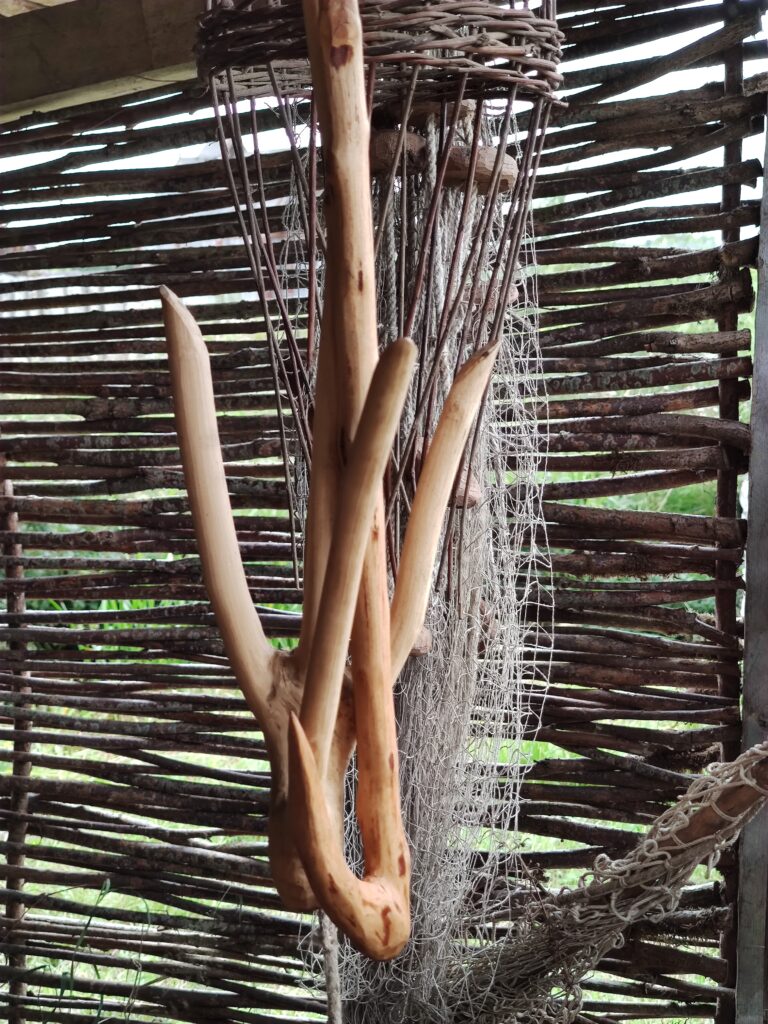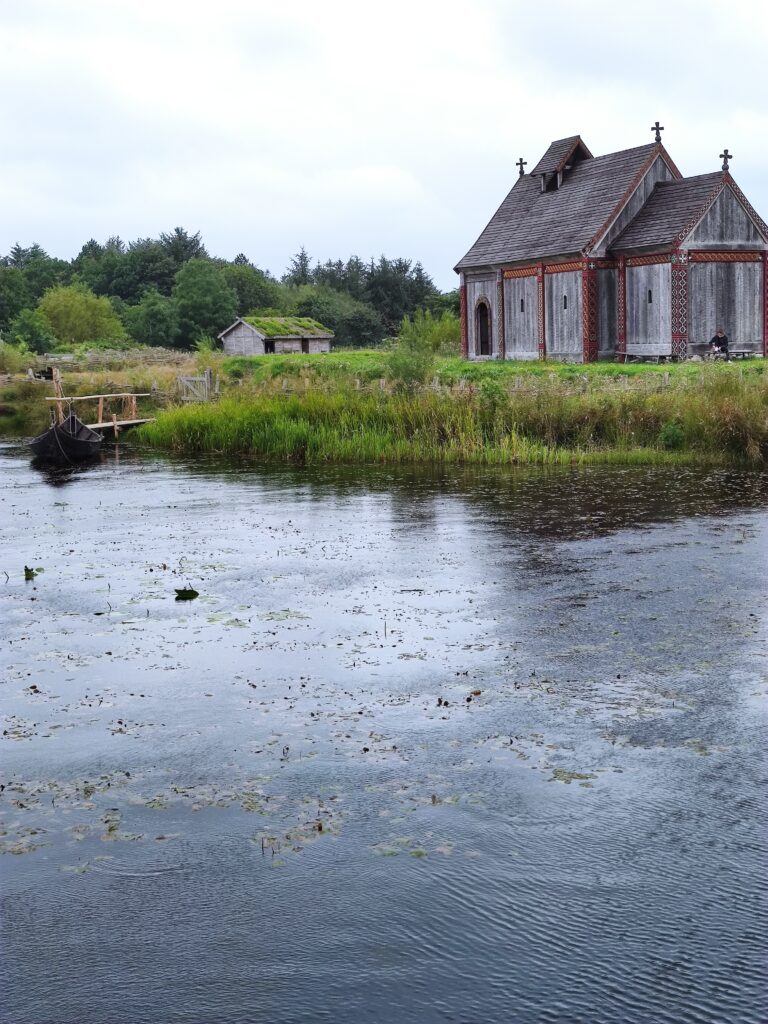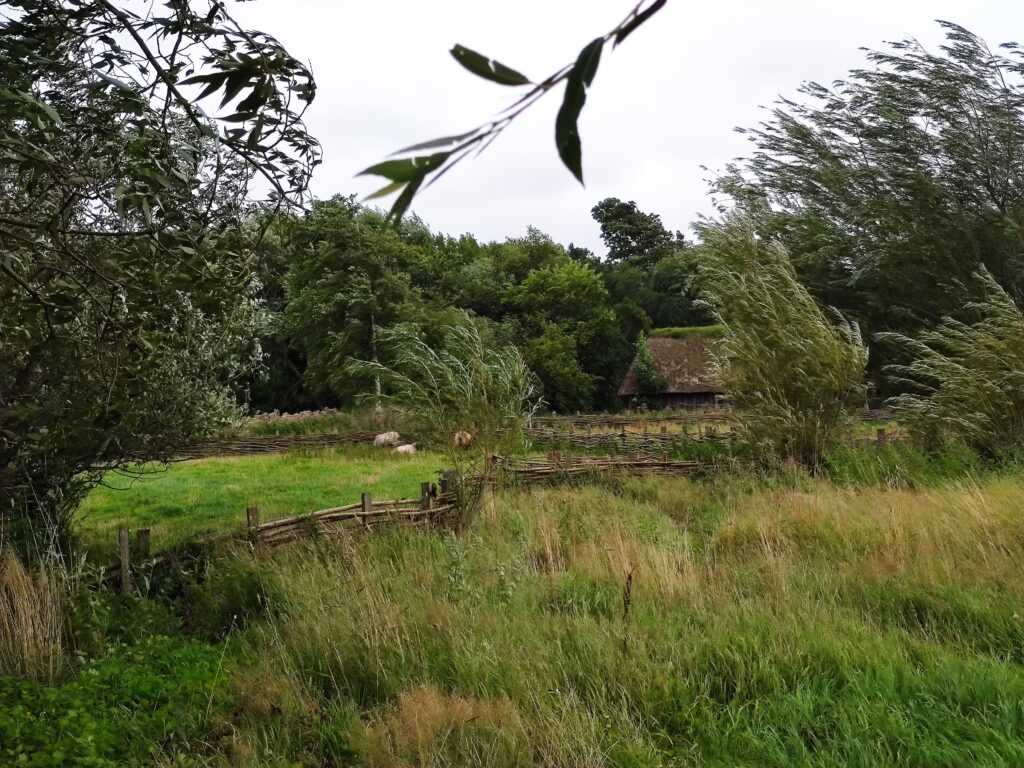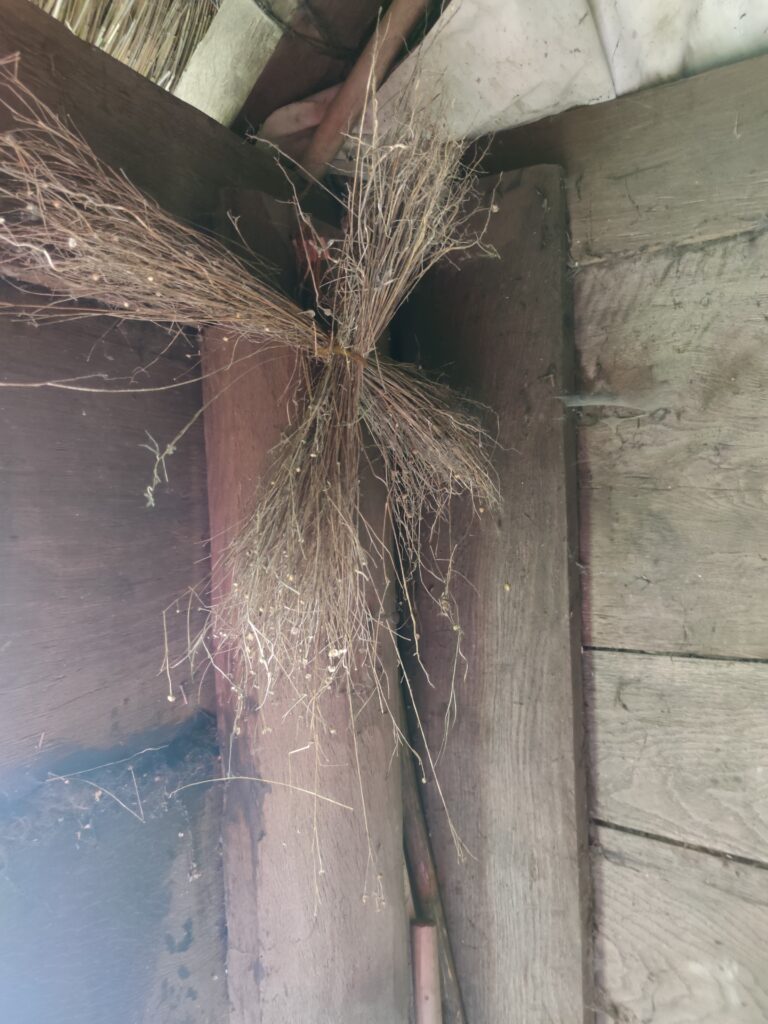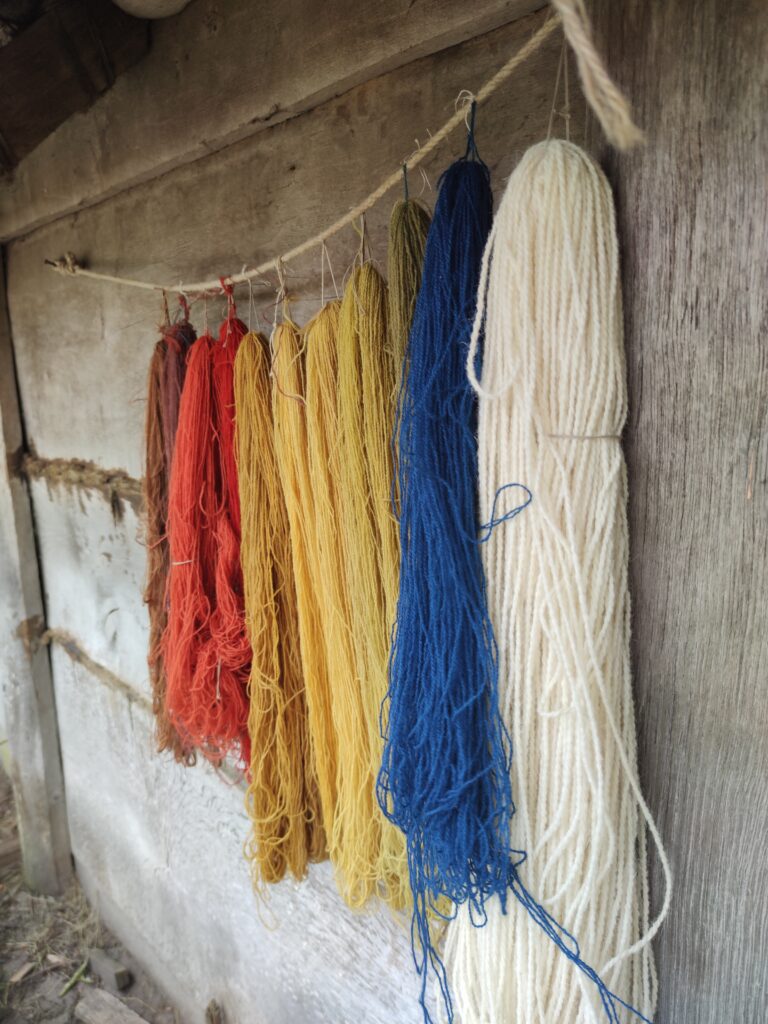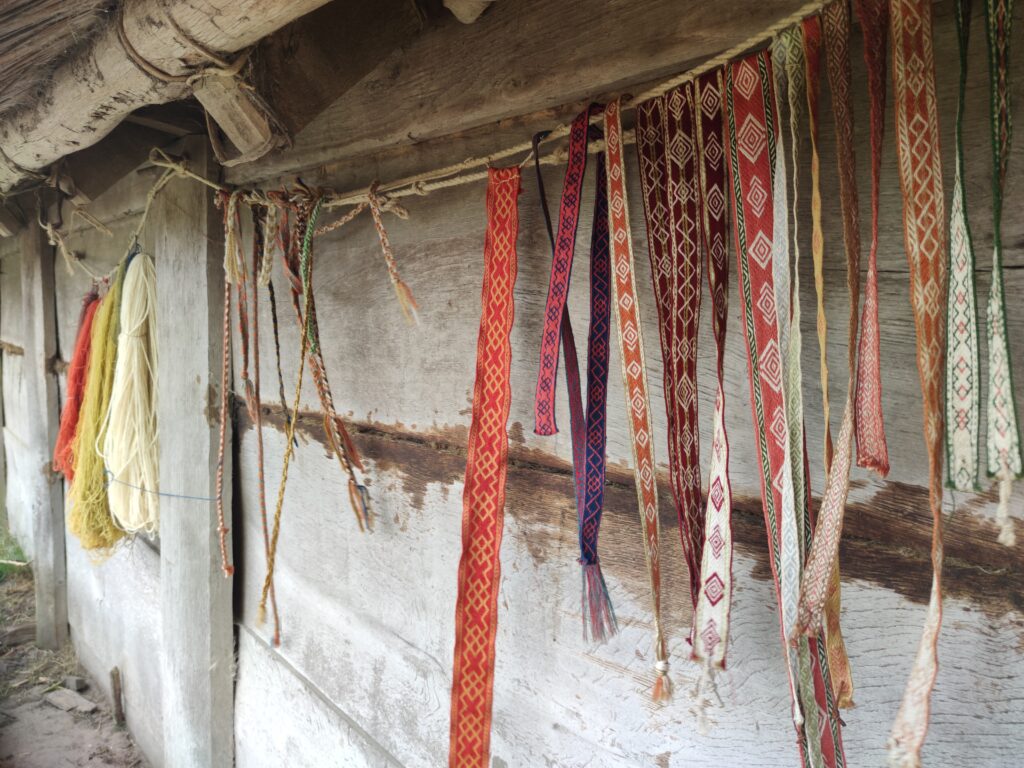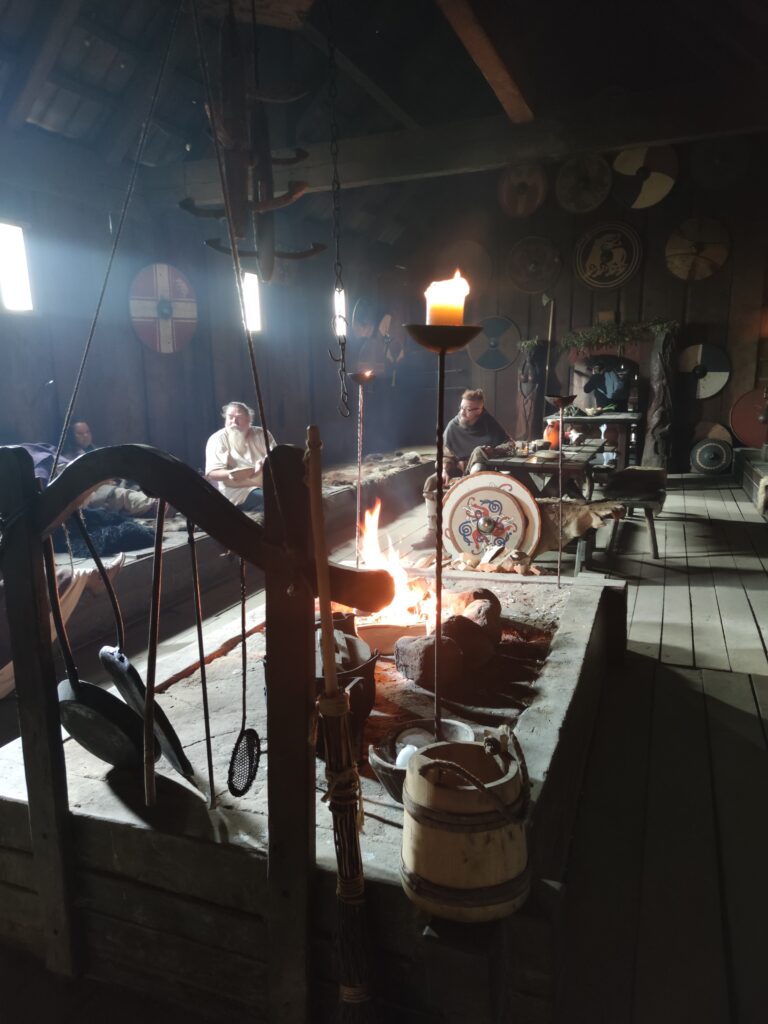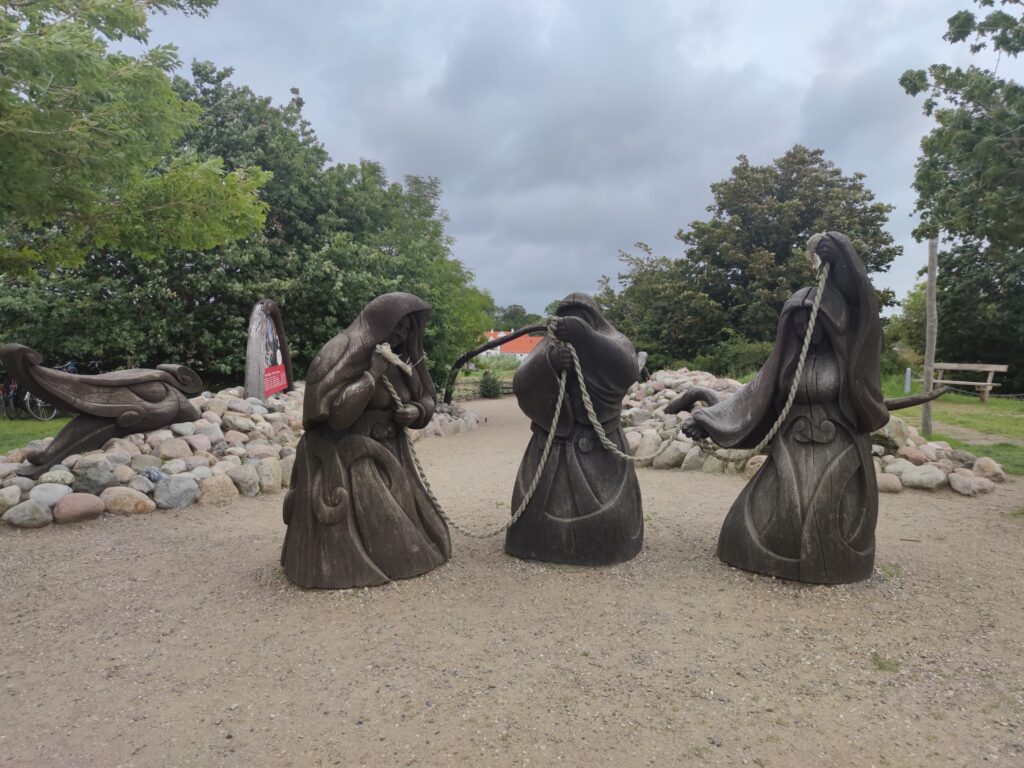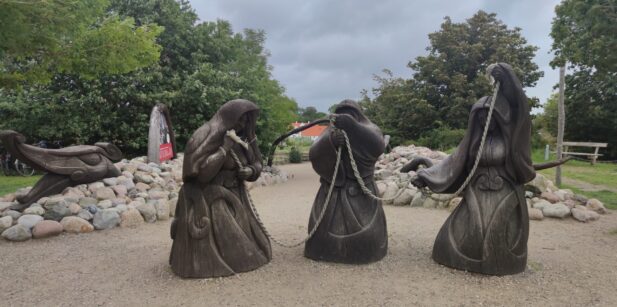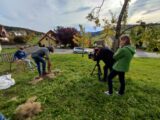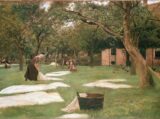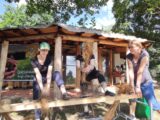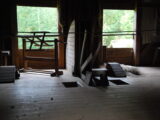Rain, storm and Vikings, that sums up our Denmark experience so far. A horrible weatherfront has taken a firm grip on the islands, bringing horizontal rain and more than uncomfortable temperatures. You don't want to get out of the bus, let alone drive hundreds of kilometres in precarious road conditions, so our intended visit to the Herning Textile Museum and in the Open Air Museum Den Gamle by into the water - for now (maybe it will work out on the way back).
The Ribe Viking Center However, it was on the way to Sweden, so we made a stop here and it was really worth it.
The extensive grounds are lovingly designed and authentically animated. Denmark's oldest city between 710-980 AD is depicted. You can walk across the market square, stop at the harbour and visit various Viking houses - which was also necessary because of the horizontal rain.
Although the textile focus was clearly on wool, there were also repeated references to flax and linen use. Among other things, I became alert to the "Viborg Shirt" project - a linen tunic found during excavations of an 11th century settlement in Viborg Søndersø, which was very well preserved and represents a unique linen find in Europe. Special places have been found in several places in Denmark where flax was produced on an almost industrial scale. Flax was also a commodity in the Viking Age.
Archaeologists and volunteers have reworked the garment from seed and documented their working hours and steps. You can read the paper here https://www.ribevikingecenter.dk/media/10424/Flaxreport.pdf
The experiment in numbers:
Growing: 56 m2
Harvest: 54 kilo
After drying and rippling: 25 kilos
After breaking and scutching: 4.25 kilos
After hackling, 2 kilos of long flax and 2.25 kilos of tow remain
In the end, 750 g of yarn were used for the shirt, which took almost 200 hours to spin with the hand spindle and 107 hours to weave, which accounted for over 80% of the total working time.
The researchers emphasise that this is their experiment and the whole process can of course turn out differently with increasing skill and experience in cultivation and fibre extraction.
In layman's terms, I now imagine that a woman in 900 AD could spare perhaps three or four hours a day to spin or weave. That would mean that the Viborg shirt for a small person took 75 to 100 days - not counting cultivation and fibre extraction. What an achievement!
